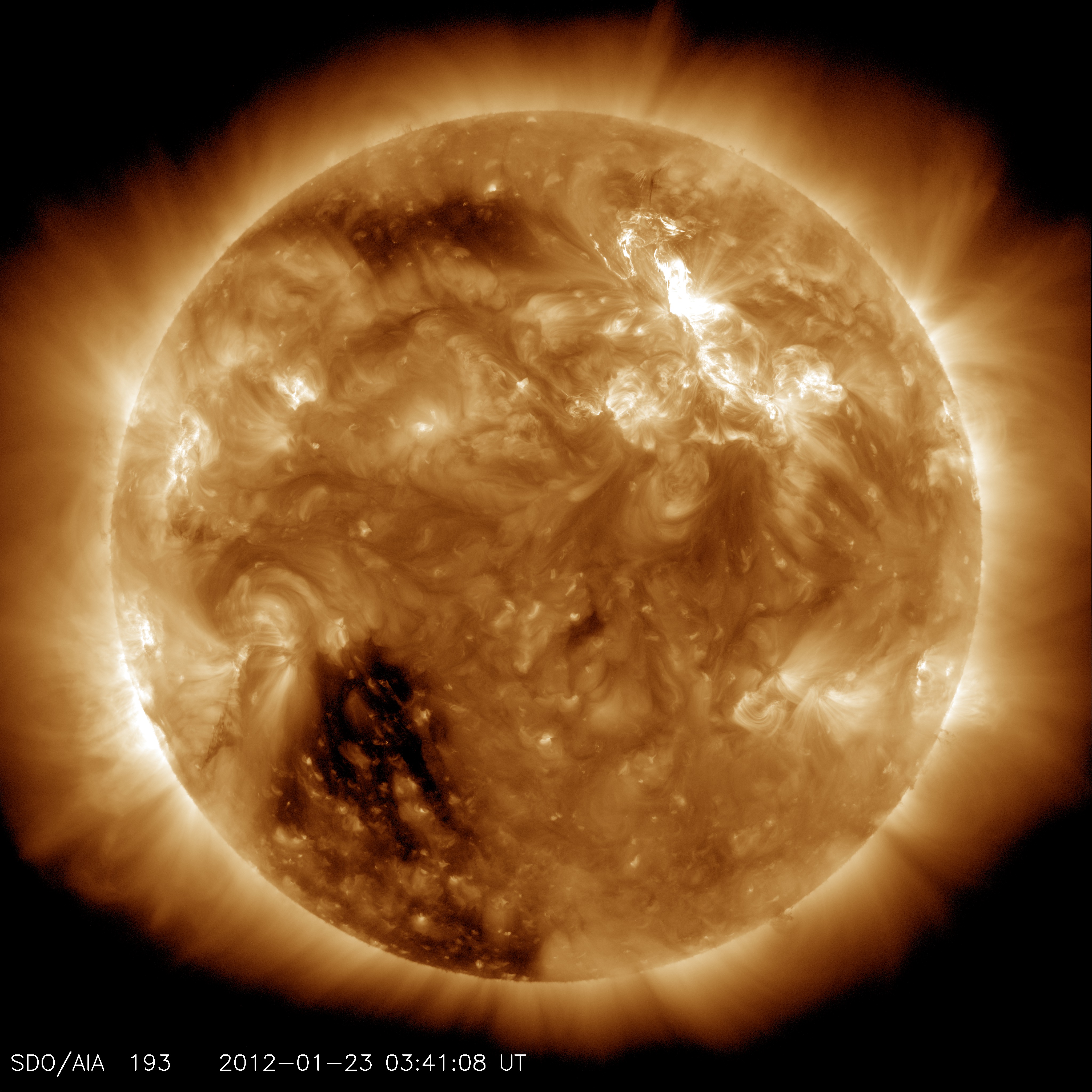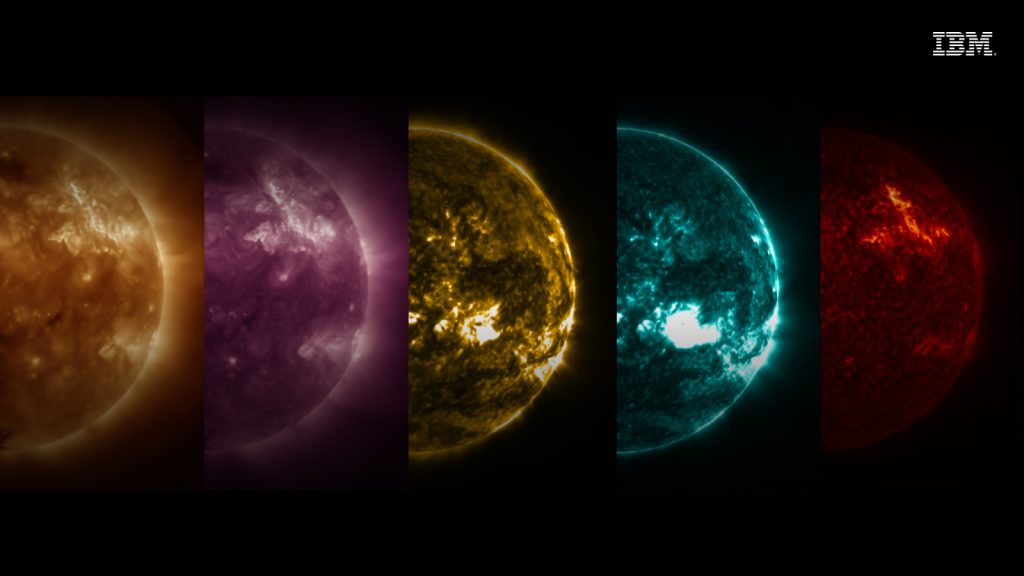IBM and NASA scientists have unveiled a groundbreaking artificial intelligence (AI) model that can predict the sun’s ferocious outbursts more accurately than ever, giving us a chance to react to dangerous and disruptive solar activity.
The new AI model, known as “Surya” (Sanskrit for the sun), absorbs the raw images that are captured by the Solar Dynamic Observatory (SDO) satellite — which has been staring directly into the sun for the last 15 years — and processes them quicker than any humans can.
Using this raw data, which IBM representatives said in a statement researchers have barely scratched the surface of, the foundational model can predict violent outbursts before they happen.
You may like
That way, we can protect astronauts and equipment in space, and even plan for disruption to power grids and communications systems on Earth.
“We’ve been on this journey of pushing the limits of technology with NASA since 2023, delivering pioneering foundational AI models to gain an unprecedented understanding of our planet Earth,” Juan Bernabé-Moreno, the director of IBM Research Europe for the U.K. and Ireland who is in charge of scientific collaboration with NASA, said in the statement.
“With Surya we have created the first foundation model to look the sun in the eye and forecast its moods.”
Solar activity has a growing impact on our lives the further we venture into space, and the more we rely on technology on Earth.
Solar flares and coronal mass ejections can knock out satellites, disrupt airline navigation, trigger power blackouts and pose a radiation risk to astronauts, making accurate solar weather prediction increasingly important.
Related: AI is entering an ‘unprecedented regime.’ Should we stop it — and can we — before it destroys us?
Forecasting storms on Earth is notoriously difficult, the scientists said, and predicting solar storms is even tougher. When solar flares erupt through the sun’s magnetic field, it takes eight minutes for that light to reach our eyes — this lag (the eight minutes in which we have no visibility over what has happened) means that scientists need to be even further ahead.
The Soraya AI model is comparable to the separate “Prithvi” family of AI models. These models process gigantic volumes of satellite data to create a more accurate representation of Earth in order to better predict its climate and weather, alongside completing other tasks such as mapping deforestation, measuring the impact of flooding and projecting the effect of extreme heat.
The Soraya model is an open-source, 360-million-parameter system designed to learn solar representation through eight Atmospheric Imaging Assembly (AIA) channels and five Helioseismic and Magnetic Imager (HMI) products.
AIA is designed to provide different views at the top of the sun’s atmosphere, known as the solar corona — taking images that span 1.3 solar diameters in multiple wavelengths to improve the understanding of the physics behind what we can observe in the sun’s atmosphere. HMI, meanwhile, is an instrument that studies oscillations and the magnetic field at the sun’s surface.
The system can accurately forecast solar dynamics, solar wind and solar flares, and detect extreme ultraviolet (EUV) spectra.. The scientists say that the novel architecture of Soraya means it can learn the underlying physics behind solar evolution. They outlined their findings in a study uploaded Aug. 18 to the arXiv preprint database, meaning that it has not yet been peer-reviewed.
“This is an excellent way to realize the potential of this data,” Kathy Reeves, a solar physicist at the Harvard–Smithsonian Center for Astrophysics, who was not involved in the study said in the statement. “Pulling features and events out of petabytes of data is a laborious process and now we can automate it.”
Staring directly into the sun
The model’s data comes from the SDO, which orbits the Earth, snapping pictures every 12 seconds. These images capture the sun at different wavelength bands to take the temperature of its layers, which vary from 5,500 degrees Celsius on the surface to up to 2 million degrees Celsius at the corona.
SDO also captures magnetic activity, with emerging sunspots revealed in white light while other imaging tools check the speed of bubbles on the surface and track the twisting of the sun’s magnetic lines.
Researchers trained Soraya by taking a nine-year excerpt of this data, first harmonizing the different layers — meaning the different types of data are amalgamated to create a more holistic picture — and then experimenting with different AI architectures to process it.
With Soraya, they challenged the model to take sequential images and then predict what SDO would see an hour into the future — checking these predictions against the actual observed images.

The sun also has various quirks that the scientists attempted to hardcode into the model — including the fact that the sun rotates faster at its equator than at its poles. Yet, remarkably, they found that Soraya was more effective at learning these quirks on its own, from the data, than through any human input.
In testing, the AI model could forecast whether an active region was likely to set off a solar flare an hour before it happened, and in some experiments, they achieved predictions within two hours (when led by visual information). This represents a 16% improvement on existing prediction methods, IBM representatives said in the statement.
The team has made the AI model open-source, and it is now available on GitHub and Hugging Face — an open-source platform that hosts AI models and datasets. SorayaBench, a curated set of datasets and benchmarks aimed at helping researchers better understand the behavior of the sun, is also available to access freely.

